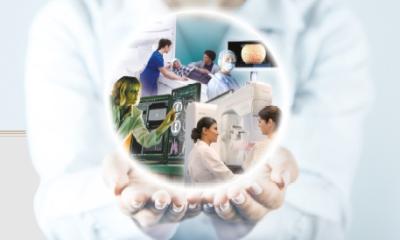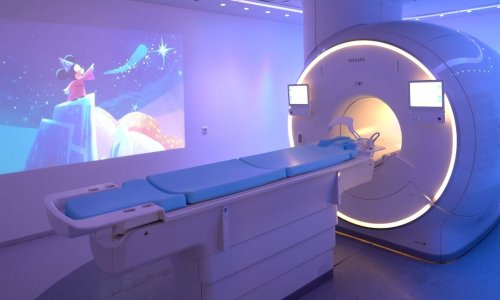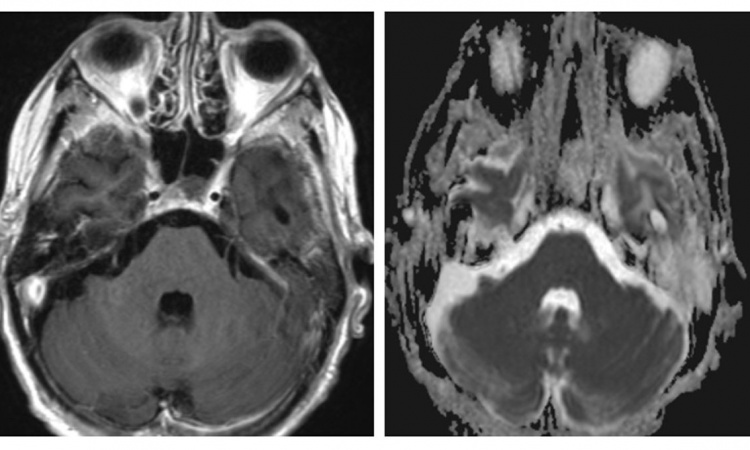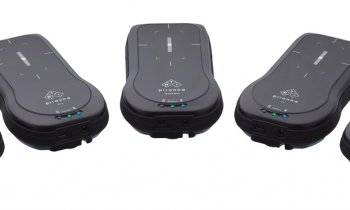Article • Radiology in Malta
Small country takes a big leap
Living in a small Mediterranean island has its own advantages; nevertheless there are certain limitations. In healthcare, for example, resources may be somewhat more limited in such a small country and some of the latest technologies may not always be available to patients.
Report: Moira Mizzi
Specialist radiologist Dr Warren Scicluna, at the Medical Imaging Department, Mater Dei Hospital, shares his experience as a radiologist trained in Malta where he currently practices. Up to just a few years ago, he notes, all the country’s radiologists worked as general diagnostic radiologists and relied on conventional imaging, such as plain radiography, ultrasound, mammography, computed tomography (CT) and magnetic resonance imaging (MRI).
He explains that with regards to interventional procedures only a few were provided by the Medical Imaging Department at Mater Dei Hospital. These, to mention a few, included image-guided drainages, image-guided biopsies, percutaneous nephrolithotripsy, peripheral angiography and angioplasty. As a result, patients necessitating more specialised radiological techniques or investigations, had to be sent abroad, or would be reviewed by a visiting consultant. ‘This obviously placed an extra financial load on departmental resources.’ he points out.
Today, we have a wide range of specialties
Warren Scicluna
In 2008, just four years after Malta joined the European Union, a post-graduate Radiology training programme was set up. The training curriculum is largely based on the UK Royal College of Radiologists training curriculum. Trainees spend five years in training, at least one year of which needs to include sub-specialty training in a centre of excellence abroad. A Certificate of Completion (CCT) is awarded to trainees who have completed five years in-training, have successfully passed their annual review of competency progression (ARCP), passed the final FRCR examination and spent a year of subspecialty training abroad.
So far, seven residents have successfully finished training and have been awarded CCT. Five trainees are about to embark on subspecialty fellowship abroad. Six other trainees are currently undertaking pre-FRCR general radiology training rotations at the Medical Imaging Department in Mater Dei Hospital.
Dr Scicluna recalls how, when he himself was a trainee, he and his fellow trainees were encouraged to choose different specialties so as to widen the local diagnostic and interventional scenario. ‘Today, we have a wide range of specialties, including uroradiology, neuroradiology, interventional oncology, gastrointestinal, breast, paediatric and cardiac imaging, and,’ he adds: ‘this was supplemented by the addition of new equipment, such as a 3-Tesla MRI scanner, new mammography and ultrasound machines, while a new angiography suite and a 256-slice CT scanner are also in the pipeline.
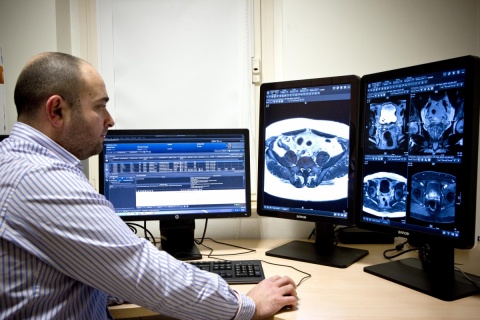
‘In the meantime, the specialists were also provided with new devices, such as wires, stents, microwave and radiofrequency ablation devices, an insufflator for CT colonoscopy, ultrasound contrast, embolisation spheres with and without drug loading, to mention a few.’
The new services available in every radiology sub-specialty in Malta are various. In the case of uroradiology, Dr Scicluna’s own specialty, these include MRI of the prostate for local staging and diagnostic purposes, targeted transrectal ultrasound prostate biopsy, MRI of the penis for staging or imaging of Peyronies’ disease, transrectal ultrasound to assess infertility amongst other conditions and ultrasound Doppler of the penis for erectile dysfunction.
We’ve come a long way in less than a decade, mostly by changing the way we utilise our resources
Warren Scicluna
The Neuroradiology section now offers a 24-hour on-call service for mechanical thrombolysis, carotid stenting services and meningioma embolisation, whilst the radiologists working in interventional oncology have introduced microwave ablation of liver, renal, pulmonary and pancreatic lesions and transcatheter arterial chemo-embolisation (TACE). Gastrointestinal imaging services include CT colonography and CT/MR enterography, while breast imaging now provides triple assessment and stereotactic biopsy and vacuum-assisted core biopsy are to be introduced soon. Cardiac CT and MR have also been recently added to the repertoire. Although certain specialised techniques, such as coiling of aneurysms and transjugular intrahepatic porto-systemic shunts do not form part of the currently available local services, possibly due to the small number of patients needing such interventions, Dr Scicluna insists that, despite its limited resources, the local healthcare system can still boast of a state of the art Medical Imaging Department.
‘We’ve come a long way in less than a decade, starting off with the most basic of expertise, to the diversity and wealth of experience we enjoy today, mostly by changing the way we utilise our resources,’ he states with pride.
This was indeed a big leap from the ‘small island mentality’ of the past, where limitations shaped the perspective of both the individual professional and the healthcare system at large. It only took one small shift to change the department for the better and irrevocably.
03.03.2016



